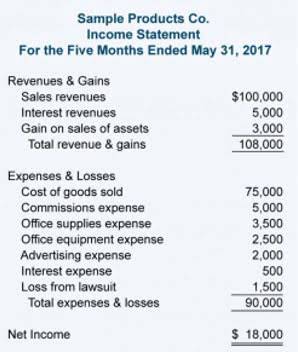
This straightforward relationship between assets, liabilities, and equity is the foundation of the double-entry accounting system. A negative shareholders’ equity means that shareholders will have nothing left when assets are liquidated and used to pay all debts owed. On the other hand, positive shareholder equity shows that the company’s assets have grown to exceed the total liabilities, meaning that the company has enough assets to meet any liabilities that may arise. Shareholders’ equity occupies a specific position within the fundamental accounting equation, which what are retained earnings states that Assets equal Liabilities plus Shareholders’ Equity.
- In the case of an acquisition, it is the value of company sales minus any liabilities owed by the company that are not transferred with the sale.
- Retained earnings, also known as accumulated profits, represent the cumulative business earnings minus dividends distributed to shareholders.
- We refer to a company’s equity (business net worth or company book value) as the shareholders equity.
- Shareholders Equity is the difference between a company’s assets and liabilities, and represents the remaining value if all assets were liquidated and outstanding debt obligations were settled.
- By definition, a company’s assets minus its liabilities equals its stockholders’ equity (also known as «net equity»).
- Retained earnings represent the cumulative net income a company has generated, less any dividends it has paid out to shareholders.
Video Explanation of the Balance Sheet
- A corporation’s current assets consist of items like cash, accounts receivable, inventory, raw materials and prepaid rent.
- This approach requires identifying the specific balances for Common Stock, Preferred Stock, Additional Paid-in Capital, Retained Earnings, Treasury Stock, and Accumulated Other Comprehensive Income/Loss.
- This account represents shares of the company’s own stock that it has repurchased from the open market.
- Shareholders’ equity can be calculated by subtracting a company’s total liabilities from its total assets, both of which are itemized on the company’s balance sheet.
- In other words, since the corporation is the same before and after the stock dividend, the total market value of the corporation remains the same.
- Short-term debts generally fall into the current liabilities category, as these are things that a company is most likely to pay in the near future.
- Retained earnings are usually the largest component of stockholders’ equity for companies that have operated for many years.
The income statement, statement of cash flows, statement of comprehensive income, and the statement of stockholders’ equity report information for a period of time (or time interval) such as a year, quarter, or month. Usually financial statements refer to the balance sheet, income statement, statement of comprehensive income, statement of cash flows, and statement of stockholders’ equity. The items that would be included in this line involve the income or loss involving foreign currency transactions, hedges, and pension liabilities.

Example of How to Calculate Stockholders’ Equity
It is one of the three main components of a corporation’s balance sheet, the other two being assets and liabilities. The fundamental accounting equation is total assets equal the sum of liabilities and equity. This equation is the basis for the balance sheet, which summarizes a company’s financial position at a specific point in time. In all of the examples discussed in this article, the basis of calculating equity was rooted in this accounting equation. If negative, the company’s liabilities exceed its assets; if prolonged, this is considered balance sheet insolvency. Typically, investors view companies with negative shareholder equity as risky or unsafe investments.

How shareholders’ equity helps fill out a company’s financial picture

As a result, as of March 31, 20XX, ABC Ltd’s stockholders’ equity was $140,000. The sum of the company’s liabilities is the next component of the equation. The day a share trades without having the option to collect a declared dividend. An investor would be qualified for dividends prior to the Oil And Gas Accounting ex-dividend date. He enjoys finding ways to communicate important information in a meaningful way to others.
Additional Resources

Generally a long term liability account containing the face amount, par amount, or maturity amount of the bonds issued by a company that are outstanding as of the balance sheet date. A current liability account that reports the amounts of cash dividends that have been declared by the board of directors but not yet distributed to the stockholders. Preferred stock that can be exchanged by the holder for a specified number of shares of common stock of the same company. The amount at which the holder of preferred stock or bonds must sell the stock how to find total stockholders equity or bonds back to the issuing corporation. The call price might be the face or par amount plus one year’s interest or dividend.
- If a corporation had 100,000 shares outstanding, a stockholder who owned 1,000 shares owned 1% of the corporation (1,000 ÷ 100,000).
- Imagine this company’s balance sheet reports its total liabilities as $750,000.
- In other words, shareholders equity is the total asset of a company minus its total liabilities.
- Many investors view companies with negative shareholder equity as risky or unsafe investments.
- The result is the company’s average shareholder equity for those two consecutive periods.



